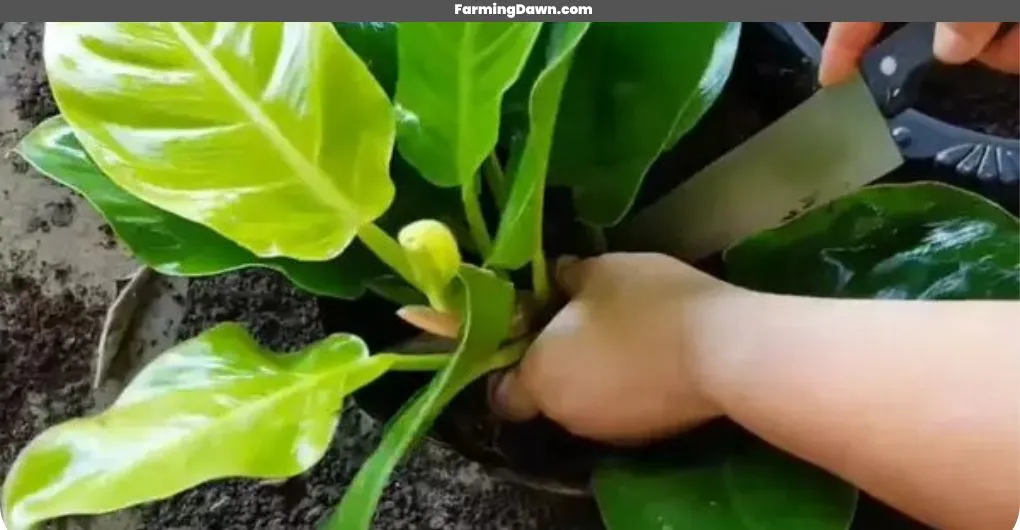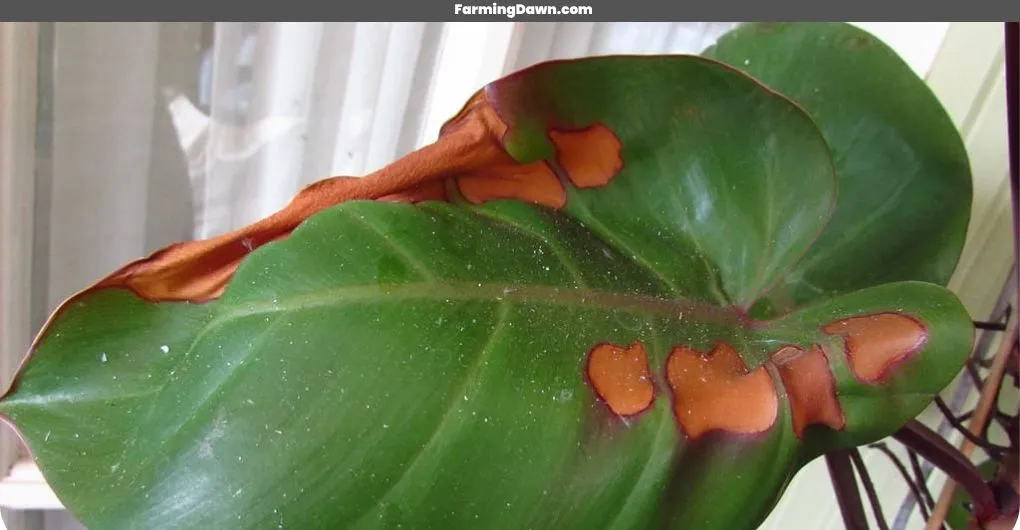If you’re looking for a beautiful and easy-to-care-for plant, the Philodendron Moonlight is perfect for you. It’s an old friend that many of us have grown up with, so it’s sure to bring some familiarity into your home.
But don’t let its familiar appearance fool you; this tropical beauty has unique characteristics that make it stand out from other plants in its family. In this article, we’ll take a look at why the moonlight philodendron stands apart and how to best care for it.
We’ll discover its origin, explore what makes it special, and show you step-by-step how to grow and propagate it, all while giving you tips on keeping your new addition happy and healthy.
Overview Of Philodendron Moonlight
The moonlight philodendron is an incredibly beautiful and eye-catching houseplant. It’s known for its uniquely shaped leaves that have a light yellow hue near the center, surrounded by bright green on the edges. This stunning look makes it the perfect addition to any home or office space!
Related: How to care for Alocasia Zebrina?
Take a quick overview of this beautiful plant below:
| Common Name | Prayer Plant |
| Scientific Name | Philodendron Moonlight |
| Family | Araceae |
| Natural Habitat | Central and South America |
| Growth Rate | Slow to Medium |
| Identification | Oval-shaped leaves with a vibrant yellowish-green color |
| Blooming season | Spring, summer |
| Size | 20- 24 inches tall and |
| Toxicity | Toxic to pets and humans. |
| Water | Well-moist but not oversaturated |
| Temperature | 65-80 F |
| Sunlight Exposure | Direct sunlight in the morning, and for the rest of the day, keep it in bright indirect light. |
Origin And Characteristics Of Philodendron Moonlight
Philodendron treubii moonlight, or the ‘moonlight philodendron’ as it’s often called, is a unique and captivating plant that has become increasingly popular over the years.
Native to Central and South America, this species is characterized by its dark green hue with distinct silver mottling throughout. This beautiful and striking tropical houseplant has a luscious mix of deep green leaves with bright yellow streaks running through them creating an eye-catching contrast.
Its heart-shaped foliage can grow up to 24 inches long! Not only does this visually stunning houseplant bring life into any home, but its easy care requirements make it ideal for novice plant parents who want to add some greenery without too much fuss.
Philodendron treubii moonlight also reproduces easily from stem cuttings, so if you have a friend or family member looking for one of these plants you’ll be able to provide them with no issues. With its limited availability and high demand, though, why not purchase your own?
You won’t regret bringing such an eye-catching piece into your home – just remember that like all plants, it still needs plenty of light and water!
See more: The origin and characteristics of Alocasia regal shield.
How To Care For Philodendron Moonlight?
For optimal growth, Moonlight Philodendrons need bright indirect light and temperatures between 65–80°F (18–27°C). While they’re not particularly demanding when it comes to soil type, a well-draining potting mix will ensure healthier plants over time.
To properly carry out the process, you will need to take care of a couple of things:
- Water Requirements
- Fertilizing
- Pruning
- How to care for when growing indoors
Related: How to care for Anthurium Warocqueanum plant?

Water Requirements
When it comes to its water requirements, the same can be said: easy and straightforward. As with most tropical plants, they prefer that their soil remain consistently moist but not soggy or wet; in other words, you should allow the top inch of your potting mix to dry out before watering again.
Philodendron plants don’t need much water for their care, about once every 7-10 days are ideal, so make sure to adjust accordingly depending on its size and growing conditions. The key here is moderation: too little or too much water will cause issues for this plant.
Fertilizing
As far as caring for your plant, regular fertilizing is a must! Philodendron moons love fertilizers rich in nitrogen, phosphate, and potassium, all of which can be found in most general-purpose liquid or granular fertilizers on the market today.
When applied every two weeks during their growing season (spring through fall), these nutrients will help ensure healthy growth and vibrant coloration for your precious philodendron moonlight.
Best of all? You don’t have to worry about overfeeding this species since they aren’t particularly prone to fertilizer burn, something you might want to keep in mind when propagating or repotting any new plants you bring home from the store.
Fertilizer should also be used sparingly if planting directly into soil outdoors; otherwise, you may end up with too much build-up and less-than-ideal results!
Pruning
Now that you know the basics of fertilizing your moonlight plant, it’s time to learn about pruning. Pruning is an important step in ensuring a healthy and mature moonlight philodendron flower. It helps to remove any dead or damaged leaves so that new growth can occur.
Pruning also encourages fuller foliage and helps maintain a desired shape for your plant. When pruning, use clean scissors or shears to avoid transferring disease from one part of the plant to another. Be sure to cut away any yellowing or wilted leaves as these are signs of stress on the plant.
Keep an eye out for pests like spider mites which may be hiding among leaves and stems, if identified early, they can be removed with a few snips! With regular pruning, you’ll have a vibrant, lush moonlight philodendron that will last for years to come.
Growing Indoors
To make sure it grows as healthy and lush as possible, there are a few things you need to keep in mind when taking care of it indoors! Philo Moonlight Care starts by placing the plant in an area where it gets indirect sunlight throughout the day, this could be near a window or on a shelf away from direct sun exposure.
Make sure to water regularly; about once every week should suffice, too much water can lead to root rot.
Also, give your Philo moonlight some extra humidity by misting its leaves or providing other forms of moisture like grouping plants together which helps increase air circulation around them, both methods will help prevent the yellowing of leaves due to dry conditions.
With these tips, you’ll have no problem growing a happy and vibrant Philodendron Moonlight at home!
How To Propagate Philodendron Moonlight?
Now let’s talk about propagating Philodendron Moonlight. The division is the simplest way to propagate, just break off a piece and let the roots grow. Cuttings are another great way to multiply, just snip off a little stem and insert it into the soil.
Water propagation is a fun way to go, just grab a glass and stick the stem in there with the roots growing in the water. All three methods are great ways to get more of this gorgeous plant into your home. Let’s see how to get started!
See more: How to propagate string of turtles?

Division
A great way to propagate this plant is by division. All you need to do is separate some of the stem cuttings from a mature-looking Philodendron treubii or Moonlight plant into smaller sections with at least one root node on each piece.
Plant these pieces in the soil after pruning any damaged roots and leaves, water them regularly, and keep them warm. Before you know it, they’ll be growing vigorously! If done right, propagating your philodendrons will not only help you expand your collection but also bring joy as you watch your plants thrive.
Cuttings
Once you’ve got your Philodendron Moonlight cuttings, it’s time to get them ready for propagation. It’s an exciting process that will help bring a sense of belonging and joy as you watch these plants thrive under your care. When preparing the cuttings, make sure to clean away any excess dirt or damaged roots with pruning shears.
Then simply insert the cutting into moist soil and water regularly, your moonlight philodendron propagation is on its way!
Water Propagation
Once your cuttings have been planted, you can also choose to propagate them with water. For this method of propagation, simply place the cutting in a cup or jar filled with clean, room-temperature water and watch as new roots begin to grow within just a few weeks!
With philodendron moonlight plants specifically, it’s important to keep an eye on the depth of the water since they do best when their roots are submerged but not over-saturated. As always, regular watering is key for successful propagation–so don’t forget about these beauties once they’re set up in their new homes.
All that’s left now is for you to sit back and enjoy watching your Philodendrons Moonlight flourish under your care.
Common Problems With Philodendron Moonlight
Root rot, pest infestations, and overwatering are some common problems with moonlight philodendron. These problems can lead to yellowing leaves and wilting. To avoid these problems follow the instructions described below.
If you follow the proper care instructions for this plant you should have no problem avoiding these common problems.

Root Rot
Root rot is a common problem for philodendron moonlight plants and it can be devastating if left untreated. It’s caused by an array of microorganisms that feed on the roots, leading to root decay which in turn affects the entire plant’s health.
To prevent this from happening, you should make sure your soil drains well and isn’t too wet, as waterlogged soils are most prone to developing root rot. Also, avoiding over-fertilizing or overwatering your philodendron will help keep the risk of root rot down.
Pest Infestations
Pest infestations can be just as damaging to your moonlight philodendron and moonshine philodendrons as root rot, if not more so. Common pests like aphids and mealybugs will suck the sap from the leaves of these plants, causing them to yellow or brown prematurely.
To prevent this, keep an eye out for any signs of infestation such as webbing on the stems or small insects crawling around the plant. If you do spot something suspicious, take action right away by using a pesticide that’s specifically designed for houseplants.
Overwatering
Overwatering is another common issue for philodendron moonlight and moonshine plants. If you’re not careful, it can cause root rot, or worse, lead to the death of your beloved plant! To avoid this, make sure you check the soil regularly with a moisture meter; if it reads ‘dry’, then go ahead and water lightly.
Don’t forget that too much of a good thing isn’t always beneficial, overwatering won’t just harm your precious moonlight philodendron, but also stunt its growth. So pay attention to how often you give these plants their drink and watch them thrive!
Frequently Asked Questions Related To Philodendron Moonlight
Is Philodendron Moonlight Rare?
Moonlight philodendron is not considered a rare plant, but it can be difficult to find in some areas or at certain times of the year due to its popularity among plant enthusiasts.
It is a relatively common cultivar of the Philodendron genus and can be found at many nurseries, plant stores, and online retailers in the USA that specialize in houseplants.
Where To Find Philodendron Moonlight?
There are many places to find this plant in the USA. Some of the options include local nurseries and garden centers, and online plant retailers such as The Sill, Bloomscape, and Etsy.
You can also join Facebook plant groups and plant auctions on social media platforms like Instagram, where you may be able to bid on a moonlight philodendron.
Does Philodendron Moonlight Climb?
Moonlight Philodendron is a non-climbing plant, meaning that it doesn’t naturally climb or produce aerial roots that attach to surfaces. Instead, it has a more upright growth habit and can be trained to grow on a stake or trellis for support as it matures.
If you’re willing to provide proper care, then this plant can grow to be several feet tall, and its leaves may become larger and more elongated as it ages.
Who Grows Philodendron Moonlight In Florida?
There are nurseries and growers in Florida that may grow moonlight philodendron. Some of them include Agristarts, Florida Hill Nursery, Glasshouse Works, and Logee’s Plants for Home & Garden.
What Is The Difference Between Golden Goddess And Moonlight Philodendron?
The main difference between Golden Goddess and Moonlight Philodendron is their leaf color. Golden Goddess has bright yellow-green leaves that may turn green as the plant matures, while Moonlight has pale lime-green leaves that may become more yellow as the plant ages. Also, Golden Goddess has a more compact growth habit, while Moonlight can grow to be several feet tall.
Can Philodendron Moonlight Grow In A Greenhouse?
Yes, moonlight philodendron can grow well in a greenhouse environment as long as its growing conditions are suitable. Greenhouses can provide a stable and controlled environment that can help promote healthy growth for tropical plants like moonlight philodendron.
However, it’s important to ensure that the greenhouse provides adequate light, humidity, and temperature conditions for the plant.
Final Thoughts
In conclusion, the Philodendron Moonlight is a stunning tropical plant that will make any home look more vibrant and alive. Because of its ease of care and ability to thrive in most indoor environments, it’s no wonder why this particular species has become so popular among houseplant enthusiasts.
Not only does it bring beautiful color into our lives, but studies have shown these plants can help us feel calmer and reduce stress levels. With just a little bit of attention and love, you too can enjoy the beauty and benefits of owning a moonlight philodendron!






